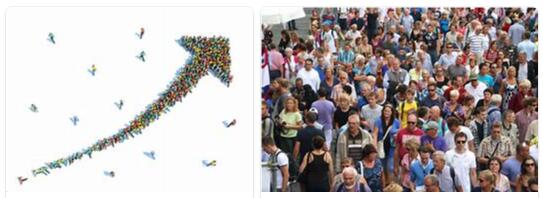The Kingdom of the Netherlands is one of the countries of the European Union. It is bordered to the north and west by the North Sea, to the east by Germany and to the south by Belgium. Its surface area is 41,526 km², and it has 1,027 km of borders. In addition to this European territory corresponds to the Netherlands Antilles and Aruba, in America. In Spanish, the popular name of this country is Holland, although, in reality, Holland is only its coastal region. Its name (Netherlands) is very significant, because a good part of its territory is, physically, below sea level. Its lowest point is 6.74 m below sea level, in Zuidplaspolder near Nieuwerkerk aan den Ijssel, South Holland, and the highest 321 m above sea level, in Vaalserberg, municipality of Vaals, Limburg.
The surface of the country that is below sea level is, really, a human construction gained from the sea thanks to a complex system of channels and drains: the polders.
Its coasts are regular. They are formed by low and sandy shores that form almost a continuous beach along the entire coast. The West Frisian archipelago corresponds to it, a succession of sandy bars in front of the coasts. The largest islands are those of Texel, Vieland, Terschelling and Ameland. Behind the Frisians we find a large inland lake divided into two parts: Waddenzee, the closest to the sea, and Ijsselmeer, the inland.
Political-administrative organization
Administratively the Netherlands is made up of twelve provinces:
- Gróninga (Groningen), capital of Gróninga
- Friesland (Friesland), capital Leeuwarden
- Drenthe (Drenthe), capital Assen
- Overijssel, capital Zwolle
- Gelderland (Gelderland), capital Arnhem
- Utrecht, capital Utrecht
- Flevoland (Flevoland), capital Lelystad
- North Holland (Noord-Holland), capital Haarlem
- South Holland (Zuid-Holland), capital The Hague (Den Haag)
- Zealand (Zeeland), capital Midelburg (Middelburg)
- North Brabant (Noord-Brabant), capital Bolduque (‘s-Hertogenbosch)
- Limburg (Limburg), Maastricht / Maastricht capital
Each province is governed by a commissioner, and has a legislative chamber elected by universal suffrage. The provinces are divided into municipalities, governed by a board elected by universal suffrage, headed by the burgomaster (mayor).
Population
The Netherlands has a population of just over 16.7 million residents, which gives one of the highest population densities in Europe, and even in the world if we exclude the small islands, since they exceed 404 h / km². However, the population is unevenly distributed throughout the territory. South Holland is the most populated region, with more than 1,200 h / km², followed by North Holland with more than 975 h / km², and Utrecht, with more than 850 h / km², that is to say, the coast and the southwest corner. On the contrary, other regions have a medium density. The northern provinces: Frisia, Gróninga and Drente have population densities between 190 and 250 h / km².
The Dutch population is aging, as befits a developed country that has completed the demographic transition and the last generations of this period are still alive. Children under 15 years of age account for 17% of the population, between 15 and 65 years of age 68% and more than 65 the remaining 15%. Population growth is around 0.5% per year, very low, and very far from replacement rates, and this despite a migratory balance of 2 ‰. The birth rate is very low, around 10.5 ‰, which gives a fertility of around 1.6 children per woman. The mortality rate is very low (8.7 ‰), and the infant mortality rate is even lower (4.8 ‰), as corresponds to a country in which quality health coverage reaches the entire population. With these data, life expectancy at birth is around 79 years.
The Dutch population has a very high degree of urbanization. More than 90% of the population lives in cities, but, nevertheless, there are not really large cities, if not a whole network of medium cities. There is a large conurbation, Randstad, but around the main cities there are a series of cities that, as a general rule, accumulate more population than the reference city.
As a country located in Europe according to DENTISTRYMYTH, the Netherlands is a land of immigrants, and that despite being an overpopulated country. The current composition of immigrants is defined after the Second World War. Italians, Portuguese and Spanish arrived to recover the country, but the bulk of the immigrants are Germans, Turks, Moroccans and those from their American territories: Suriname and the Netherlands Antilles.
Delta Plan
During the 1953 North Sea flood, a breach in a levee killed 1,835 people, forcing the evacuation of another 70,000, in addition to the destruction of 4,500 buildings. To prevent such a catastrophe from repeating itself, an ambitious project was launched, the Delta Plan that linked the mouths of the Rhine and the Meuse.
The most outstanding work of the complex is the Oosterscheldekering which is considered one of the Seven Wonders of the Modern World according to the American Society of Civil Engineers.
In addition, the Netherlands is one of the countries that suffers the most from climate change. Not only are floods produced by the sea a problem, since an overflow of rivers could also be very dangerous.
